By Christina Newland,Features correspondent
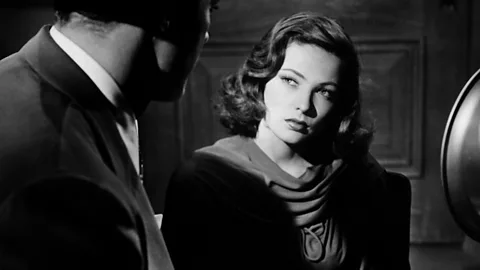 BFI National Archive
BFI National Archive
The 1940s film star was worshipped for her looks – but they were also a poisoned chalice when it came to her career and legacy. Nearly a century on, has the way we consider beauty changed all that much?
Female beauty is a concept that is coloured by power dynamics and symbolism. It has classical ideals, but ever-shifting goalposts, dependent on decade or era. And like so much that is feminine, it is also derided. Too much concern with beauty, in oneself or others, is often seen as frivolous, even while its social currency – and the fact of it still having currency – remain fascinating elements of Western culture and society. All of this to say: anyone in the public eye who is given the title of "the most beautiful woman" is handed something of a poisoned chalice.
Gene Tierney was one of many actresses in Hollywood, past and present, who have been so labelled, described as "unquestionably the most beautiful woman in movie history" by studio head Darryl Zanuck. Blessed with aqua-blue, cat-like eyes, and an unnervingly symmetrical face, she was almost doll-like in her appearance; an impression aided by the carefully painted red lips of her era. She became famous at the start of the 1940s, a time of the bombshell and the pin-up. If her contemporaries in Hollywood screen beauty were the likes of Rita Hayworth, Ava Gardner and Hedy Lamarr, it was certainly saying something that Tierney was consistently referred to as the most beautiful of them all.
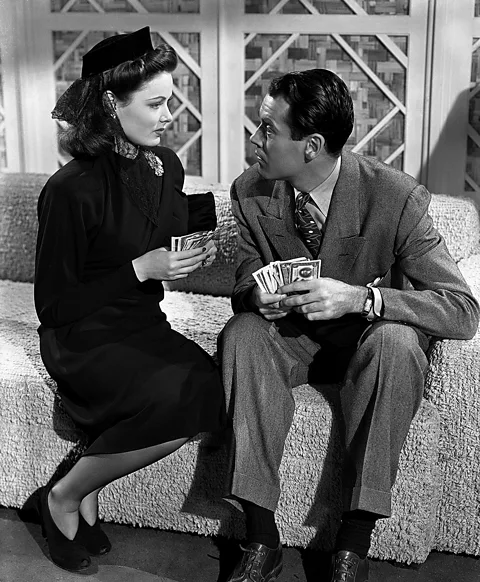 BFI National Archive
BFI National Archive
In the British Film Institute's April season Out of the Shadows: The Films of Gene Tierney, programmer Aga Baranowska seeks to highlight an actress whose work was overshadowed by this very fact. And by screening a variety of her lesser-seen films, it also raises some interesting questions about what the finite power of beauty does to the woman in possession of it when it's projected on to a cinema screen.
Tierney's career began at the start of 1940s when she was first contracted to 20th-Century Fox at 19. She came from a well-off family in Fairfield, Connecticut, where she had made her society debut aged 17, and it was, as she once noted, expected she would soon go off to marry a Yale boy. After some small parts on Broadway, her dazzling looks quickly attracted the attention of the studios, and her first major screen role came in 1942, with screwball comedy Rings on her Fingers, opposite Henry Fonda.
Publicity build-up almost always featured – and embellished – her high-society background, and her persona of coolly elegant, ladylike composure. But it didn’t quite disguise the fact that Fox often did not know what to do with Tierney. They spoke of her as a debutante but cast her in a revolving-door of parts in an attempt to figure out where she fit. Too sultry for comedy and too refined to seem low-born, the Irish-American even found herself cast in various racially ambiguous parts, with her skin intentionally darkened or her eyes elongated with makeup to give her the then-in-vogue (and deeply problematic) "exotic" look.
Her on-screen gifts
But Tierney seemed to have a knack for film noir most of all. There were her two best-known pictures – Leave Her to Heaven (1945) and Laura (1944) – her work with director Otto Preminger in Where the Sidewalk Ends and Whirlpool, two other moody film noirs both released in 1950 which see her star opposite leading man Dana Andrews, also stand out among her finest. In London-set noir Night and the City (also 1950), she's given somewhat less to do, but the film is stellar. Tierney had a talent for revealing vulnerability beneath an icy veneer, and could turn it not only to crime films but to serious drama, as with underrated W Somerset Maugham adaptation The Razor’s Edge (1946).
While the enduring power of Laura may not have necessarily furthered Tierney's acting legacy, it has bestowed on her longevity in beauty culture – Elena Parker
In gorgeous Technicolor widescreen, daylight noir Leave Her to Heaven (1946) sees Tierney at the radiant height of her fame and good looks playing a vicious murderess – a role that would result in her only Oscar nomination. Yet her beauty is not weaponised in the way we might expect: she is not so much a sexual conniver or money-hungry dame per the genre pinnacles of Barbara Stanwyck in Double Indemnity or Jane Greer in Out of the Past. Tierney is instead a pristine newlywed housewife who is so monstrously possessive of her husband's time and attention that she slowly cuts off and destroys each of the close relationships in his life. It's telling that it deploys Tierney's elegant looks as an exterior for a psychotic mind. While her character is perfectly made-up and seemingly in control, her mind seems ravaged by destructive impulses.
Her beauty is also key in Otto Preminger's film noir Laura (1944), a hypnotic story of infatuation and murder. These days, few non-cinephiles are likely to recall Tierney's name, but to see her in Laura is to remember her forever. The story revolves around a detective's obsessive search for a murdered woman after growing intrigued by a painting of her. It has shades of many dreamy, sex-and-death obsessed mysteries made since, from Hitchcock's Vertigo (1957) to several of David Lynch's works. Pivotally, the film's place in the cultural imagination stems from that painting of Tierney as Laura: her beauty is captured in time forever in this manner, precluding the real-life risks of ageing and mortality. This can't help but feel like an apt metaphor about the relationship between a star's beauty being captured and frozen in time in celluloid film, too.

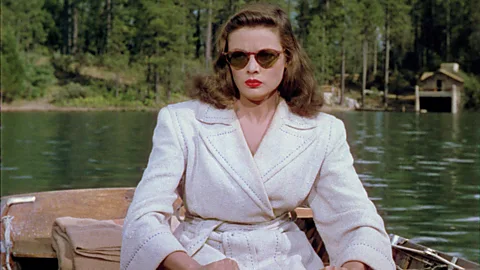 BFI National Archive
BFI National Archive
As Elena Parker, the founder of Gene Tierney Online and her forthcoming biographer, tells the BBC: "Gene expressed appreciation that she continued to be identified with Laura long after the conclusion of her career, rather than not being remembered at all. While the enduring power of Laura may not have necessarily furthered her acting legacy, it has bestowed on Gene longevity in beauty culture."
The BFI season offers a corrective to the powerful narrative of Tierney's beauty, or to her tragic personal life, which often has taken up more air than her films (she suffered from mental health struggles and an unlucky exposure to rubella during her first pregnancy, which would leave her daughter severely disabled). Cliches of "tragic beauty" or the "prettiness that helped destroy her" are an old morality play and nothing more. Tierney wrote in her 1979 memoir Self-Portrait of her appearance and her time in mental health facilities: "I have always needed to believe that my career survived on more than how I looked. I have no deeper meaning to plumb, no point to make about beauty and craziness. A friend once asked a doctor if he thought my life might have been easier, if I might not have needed confining, if I had been less pretty. 'No,' he said bluntly. 'They have ugly people in there, too.'"
How beauty standards have shifted – or not
It may seem quaint to look all the way back to Tierney, one of the stars of the 1940s, as a signifier of female beauty. After all, we might be inclined to think that a great deal has changed since. Then, body diversity was not remotely of interest; in Tierney's Hollywood, a woman's shape should be slim and hourglass, with diets, corsets and S-shaped dresses to reinforce that.
Nor was comfort of interest: it was a time before baggy jeans, fluffy-brow trends, or athleisure. There was an extremely narrow ideal of attractive femininity – white, thin, coiffed, manicured, and with no visible freckles, fat, or racial difference (unless they were playing a role that should have gone to a person of colour to begin with, and usually did not). And so the all-male studio heads and their teeming departments of make-up artists saw to that, with putty to apply to crooked noses and careful diagrams of star faces which they sought to categorise by shape and then correct with cosmetics and hairstyle.
As Cathy Lomax, an artist and Hollywood makeup expert with a PhD in star studies and cosmetics, writes in her thesis Making Up the Star: Makeup, Femininity, Race and Ageing in Hollywood, 1950–1970: "This eschewing of realism extended to the, all but identical, make-up worn by stars. Jean Porter, who was under contract at MGM in the 1940s observed, 'Our mouths were all made up the same […] our eyebrows were very much the same, our makeup was an awful lot alike.'"
Since Tierney's day, of course, some things have undeniably changed for the better in the industry: now there is greater body diversity, and growing resistance to fatphobia, racist typecasting and whitewashing. Sometimes we even see real, everyday teeth or skin texture onscreen – though usually in independent films like Paul Thomas Anderson's Licorice Pizza (2021) or Bo Burnham's Eighth Grade (2018), and still rarely enough for it to be notable.
But while Gene Tierney's claim in Self-Portrait that she was hungry for 20 years in Hollywood because "a certain thinness would add attractive contours to my face", may seem like the refuge of an old, bad past, it's fair to say the current craze around weight-loss drug Ozempic still shows that the entertainment business has not come quite as far as we would all hope. And the aforementioned factory-line beautifying doesn't sound too different from what New Yorker writer Jia Tolentino coined as "Instagram face", the phenomena of cyborgian-similar features on the app due to a combination of filters and aesthetic treatments. The beauty standards themselves may have shifted slightly, but the rush to attain a certain Stepford Wife consistency has not.

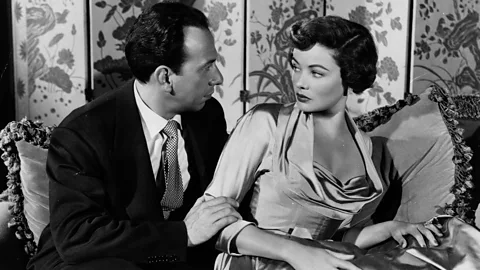 BFI National Archive
BFI National Archive
Similarly, if today the Hollywood concept of "natural" beauty is often undergirded by aesthetic treatments like dermal filler or brow lifts, the only distinction is that it was more secretive in old Tinseltown. In Tierney's era, star-sculpting techniques included dangerous violet-ray freckle peels, painful electrolysis on pesky hairlines, and even very early plastic surgery, usually on jawlines or noses which photographed mildly askew from one side.
There is a lot of talk about Gene Tierney's skin being so perfect that she didn't need to wear makeup on-screen – Cathy Lomax
Even today's fashionable "no-makeup" makeup look, too, had roots in the golden age – surprisingly, given the obvious affectation of high-glamour at play in the mid-century. "There is a lot of talk about Gene Tierney's skin being so perfect that she didn't need to wear makeup on-screen. This weird 'no-makeup' claim is something else that is often repeated – it plays into the idea that a really truly beautiful woman does not need makeup, which is something used to cover imperfections, and tricks unsuspecting men," says Lomax.
Stars from Ingrid Bergman straight through to Alicia Keys have been celebrated for their "no makeup" looks, regardless of the veracity of the claims. Historian Kathy Peiss, in her book Hope in a Jar: the Making of American Beauty Culture, sums up the paradox when she explains: "Even Max Factor, whose makeup was most closely associated with Hollywood glamour, described the 'magic of makeup' to be an illusionism that made it 'impossible for anyone to detect where the make-up begins or ends'. But looking natural, like looking glamorous, now required a box full of beauty devices."
Today's "most beautiful" stars
For proof that the industry's attitudes towards beauty are as confusing as ever, you just need to look to twentysomething Hollywood beauties like Zendaya or Sydney Sweeney, both of whom emerged from a television show, Euphoria, where visible cosmetics were the source of much of the discourse. Zendaya has spoken about putting on an alter-ego for her big red-carpet and photoshoot moments; that it isn't her who's there, but a sort of persona of another woman that she "has to buy". And Sweeney, whose beauty is still as classic-as-they-come, has been roundly derided on social media for having the temerity of being self-aware about it. Both of them, with their many cosmetics and skincare sponsorships – like stars of old who were contracted to help advertise makeup – live with the contradiction whereby beauty enhancement is a source of both discomfort and celebration.
Plus ca change. Hollywood, as the primary US image-maker of the past 100 years, would be unlikely to exist in its current form without the beauty industry, reliant as it was on creating lived-in celluloid dreams for its viewers, and perfecting the face for the advent of the movie close-up. And the beauty industry may never have reached the pinnacle of its popularity without film stars to help promote it.
However, as Tierney and her ilk showed us, performance could be in dialogue with one's appearance – and with preconceptions about what that beauty meant. Take Tierney's would-be killer in Laura, discussing how he moulded her into the perfect society beauty under his patriarchal (I daresay studio mogul-esque) instruction. Or Marilyn Monroe pouting in Gentlemen Prefer Blondes that she could be smart, but that men didn't like it. It's in these ways that women of Tierney's generation could, at least, put themselves in the narrative about their own beauty.

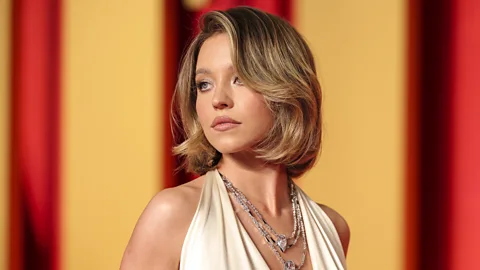 Alamy
Alamy
The beauties of 2024 have equally played with their "beautiful" image on screen in interesting ways – take, for instance, Sweeney's current starring role in nunsploitation-horror Immaculate, which deals with the objectification of women's bodies. Plus the fragmentation of an all-in-one publicity machine means that although social-media coverage of their lives and faces can be all-consuming, it is also democratic: they have a direct pipeline to their fans and can transmit whatever images of themselves they wish.
Nonetheless, the architects of cosmetic perfection in Hollywood have been responsible for so much of how women, in particular, relate to seeing an avatar of themselves – whether it's on social media, or, for a few, on the cinema screen. Gene Tierney understood the pitfalls of this as well as any Gen Z star might. The idea that women in the spotlight may ever be fully free from it seems like a distant dream.
Out of the Shadows: The Films of Gene Tierney continues at the BFI Southbank, London until 30 April.
--
If you liked this story, sign up for The Essential List newsletter – a handpicked selection of features, videos and can't-miss news delivered to your inbox every Friday.
If you would like to comment on this story or anything else you have seen on BBC Culture, head over to our Facebook page or message us on X.